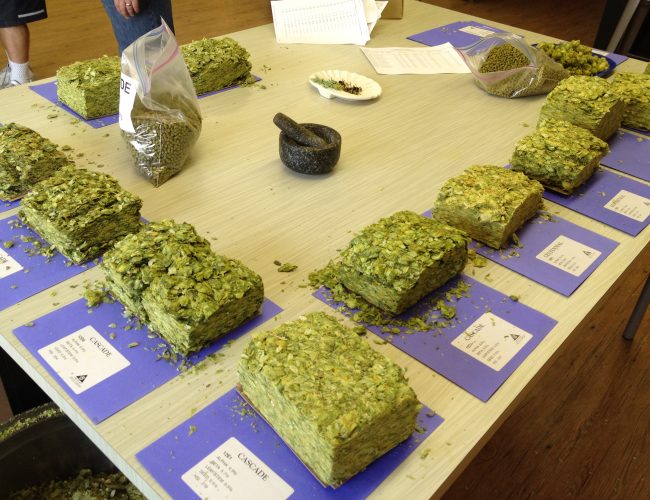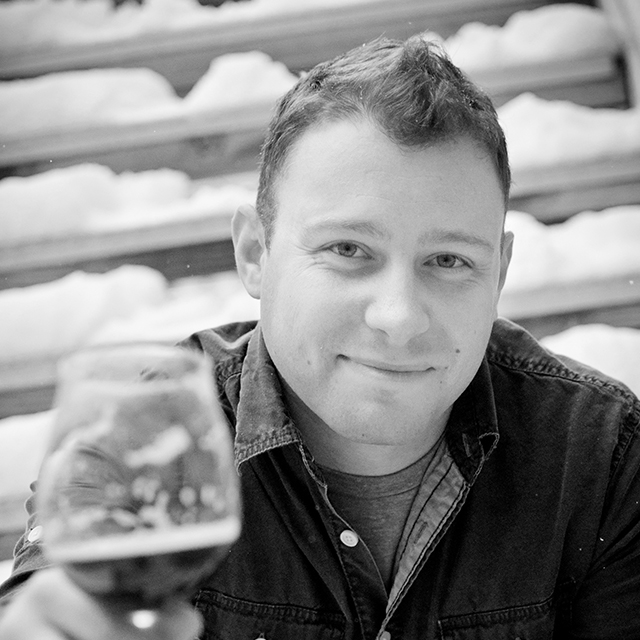Brewers are very particular when it comes to ingredients. Many carefully bank their prized yeast strains, monitor local water composition, scour analysis reports for specific characteristics to select the best malt and choose just the right hops to accentuate and distinguish the beers they brew.
While each of these quality control measures is essential to ensure that their unique craft beers look and taste the way the brewer envisioned, it is the annual hop harvest and consequent hop selection that is arguably the most idyllic.
In a recent blog post, “Drake’s Goes to Yakima- Alex’s Hop Selection,” Alexandra Nowell (lead brewer at Drake’s Brewing Co.) writes about her visit to the Yakima Valley to not only see the late summer harvest, but to select the hops that she will use in Drake’s beers throughout the next year.
Hop Selection
Just as coffee beans or wine grapes vary depending on differences in microclimates, hops harvested from different parts of the Yakima exhibit different characteristics, even if they are the same variety. Nowell explains the process of selecting the specific hops that meet her preferences from cuts of hop bales:
“For each hop variety, anywhere from two to 10 different brewers cuts of whole hops representing a hop grown in a different location are placed in front of you. This is when you tear into the cut, rub the cones between your hands and deeply inhale the aromatics of the hop, analyzing and deciding whether this is the lot you want or if you want to smell the next one in line…or both. With certain lots, you know immediately whether or not it’s up to your standard, but some are so close to the other that you want to smell each of them three or four times before making a decision.”
New Hop Varieties
What is the next Simcoe or Citra? Experimental hops are a focus of small hop farmers like Patrick Smith of Loftus Ranch. The next big flavor in hops may already be growing under an assigned number, like the Mosaic variety formally known as (HBC 369).
“…one of the coolest things I’ve ever seen—a small experimental hop yard,” said Nowell. A few vines of this, a few vines of that, some familiar names and hops that you just don’t see anymore, but many of them are known only by a number. This is the part of the tour when I get really excited. Knowing my interest in new and exciting hop varieties, Patrick [ Smith of B.T. Loftus Ranch] takes me to hops that smell of pineapple, coconut, vanilla, mango, papaya, sweet pine forests and more. Amazing!”
Importance of Visiting Hop Farms
Visiting the farms and meeting the families that are helping to supply small brewers with hops quickly becoming an annual destination for brewers. These small businesses are an integral part of the overall craft beer supply chain and it is important for small brewers to make that connection.
“I was left with a lingering feeling of how awesome and crucial it was to be able to connect with the growers and the environment of such a personally important brewing ingredient,” said Nowell. “My first hop selection is an experience I will never forget.”
Alexandra Nowell (@BrewSugar) is Drake’s Brewing Co.’s lead brewer. Keep up with the latest from the brewery in Drake’s Brewer Blog.
CraftBeer.com is fully dedicated to small and independent U.S. breweries. We are published by the Brewers Association, the not-for-profit trade group dedicated to promoting and protecting America’s small and independent craft brewers. Stories and opinions shared on CraftBeer.com do not imply endorsement by or positions taken by the Brewers Association or its members.


Share Post